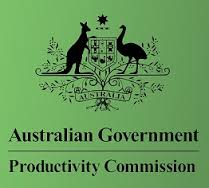 Previous infojustice posts about the Australian Government’s Productivity Commission’s Draft Report on Intellectual Property Arrangements have focused on its recommendation that Australia adopt fair use in its copyright law (here and here). This post highlights the findings regarding the extension of terms for pharmaceutical patents. Australia’s law, in effect since 1999, grants extensions to pharmaceutical firms to make up for time during which the patented drug is awaiting marketing approval. Total patent term may be extended up to a total of 25 years.
Previous infojustice posts about the Australian Government’s Productivity Commission’s Draft Report on Intellectual Property Arrangements have focused on its recommendation that Australia adopt fair use in its copyright law (here and here). This post highlights the findings regarding the extension of terms for pharmaceutical patents. Australia’s law, in effect since 1999, grants extensions to pharmaceutical firms to make up for time during which the patented drug is awaiting marketing approval. Total patent term may be extended up to a total of 25 years.
The Productivity Commission found that patent extensions (referred to as Extensions of Term, “EoT”) have failed to attract investment by the pharmaceutical industry, and have prevented local generics firms from serving the market as soon as otherwise. As a result Australia has paid significantly more for medicines: “more than half of new chemical entities approved for sale in Australia enjoy an extension in patent term, and consumers and governments (ultimately taxpayers) bear higher prices for medicines. Calculations undertaken for the recent Pharmaceutical Patents Review indicated that EoTs cost the Australian Government and consumers over a quarter of a billion dollars each year.” [emphasis added]
The Pharmaceutical Patents Review, upon which the Productivity Commission’s findings are based, had this to say to the costs of the extensions, and their disappointing incentive effect:
At the time that the EOT was introduced, the annual cost to the Pharmaceutical Benefit Scheme (PBS) was estimated to grow from $6 million in 2001-02 to $160 million in 2005-06. This cost arises because there is a delayed entry to the PBS of cheaper generic drugs. The estimate for 2012-13 is around $240 million in the medium term and, in today’s dollars, around $480 million in the longer term. The total cost of the EOT to Australia is actually about 20 per cent more than this, because the PBS is only one source of revenue for the industry.
Using the patent scheme to preferentially support one industry is inconsistent with the TRIPS rationale that patent schemes be technologically neutral. More importantly, particularly where there is already substantial patent protection and where the EOT comes into effect after the patent term has already run 20 years, patents are unlikely to be as effective as direct funding as a policy instrument for increasing pharmaceutical investment.
(For a good summary of the Pharmaceutical Patents Review, see this previous post by Matthew Rimmer.)
The extensions were introduced in an attempt to attract pharmaceutical investment, and they went into effect before the US-Australia Free Trade Agreement was signed. However, any efforts to reduce the extensions would need to comply with the Agreement’s obligation to “make available an adjustment of the patent term to compensate the patent owner for unreasonable curtailment of the effective patent term as a result of the marketing approval process.” [Art. 17(9)(8)(b)]




